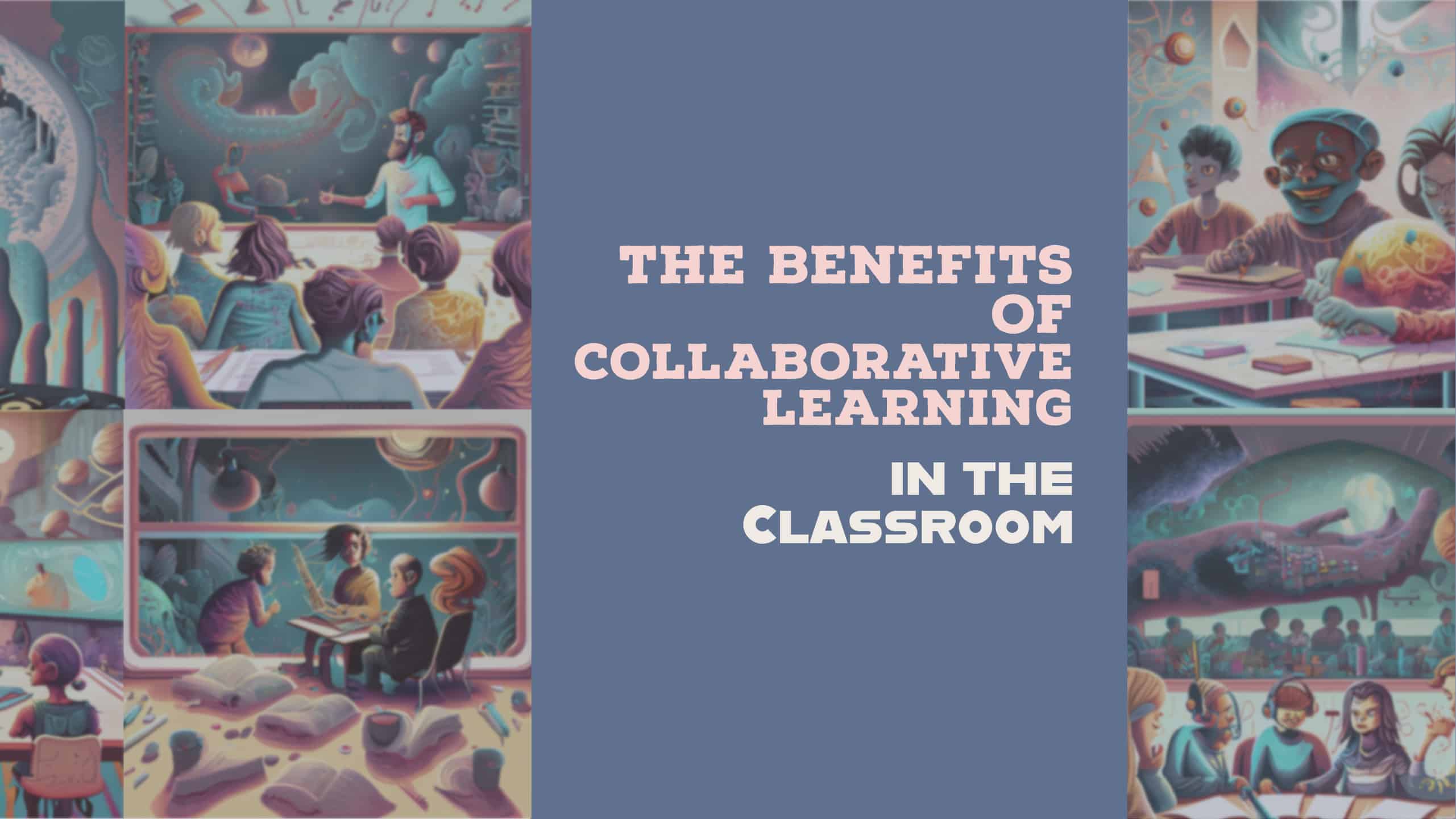This website uses cookies so that we can provide you with the best user experience possible. Cookie information is stored in your browser and performs functions such as recognising you when you return to our website and helping our team to understand which sections of the website you find most interesting and useful.
Table of Contents
You may also interested:
TL;DR: The Benefits of Collaborative Learning in the Classroom
- Defining Collaborative Learning: Collaborative learning is an interactive approach that enhances student engagement and critical thinking through group activities and discussions.
- Real-World Skills Development: This method not only improves academic performance but also equips students with essential life skills like teamwork and communication.
- Research-Backed Success: Studies show that collaborative learning leads to higher achievement levels, better information retention, and increased intrinsic motivation in students.
- Preparing for Future Challenges: Collaborative learning prepares students for real-world challenges, fostering lifelong learning and adaptability.
Have you ever pondered how the collective power of minds can transform learning? In the realm of modern education, collaborative learning emerges as a beacon, guiding the way towards a more interactive, engaging, and effective learning experience. This approach, blending teaching strategies, pedagogy, and andragogy, is revolutionizing classrooms by enhancing student engagement through cooperative learning, group work, active learning, peer interaction, and collaborative projects.
Understanding Collaborative Learning
At its heart, collaborative learning is an educational approach where students work together to explore new ideas, solve complex problems, and create collective knowledge. It’s not just about working in groups; it’s about engaging each student in a journey of active participation and mutual learning. This approach marks a significant shift from traditional pedagogy, which often focuses on younger learners, to andragogy, which addresses the unique needs of adult learners. In collaborative settings, students build not just knowledge, but also vital skills in critical thinking and problem-solving.
Implementing Collaborative Learning Strategies
A. Group Work and Cooperative Learning
Picture a classroom buzzing with the energy of students collaborating. Here, group work is not just a task; it’s an opportunity for students to learn from each other. But how do we ensure effective group work? By setting clear goals, defining roles, and encouraging every member to participate equally. From jigsaw activities to role-playing scenarios, cooperative learning activities can transform the classroom into a lively hub of ideas and discussions.
B. Active Learning and Peer Interaction
Active learning is the lifeblood of collaborative classrooms. It encourages students to be not just passive recipients of information but active constructors of knowledge. Through debates, discussions, and group problem-solving, students engage in meaningful peer interactions, enriching their learning experience. These activities are not just educational; they are a rehearsal for real-world challenges, where effective communication and collaboration are key.
Collaborative Projects and Real-World Applications
Collaborative projects are a bridge connecting classroom learning with real-world application. These projects, ranging from scientific research to creative arts, teach students the essence of teamwork, communication, and creative problem-solving. In a science class, for instance, students might work together to design an experiment, combining their unique skills and perspectives to explore new scientific concepts.
The Impact of Collaborative Learning on Student Achievement

When we delve into the impact of collaborative learning on student achievement, we unearth a plethora of benefits backed by both educational theory and empirical research. This approach is not just a teaching method; it’s a catalyst for deeper understanding and sustained academic success.
One educational framework that supports the efficacy of collaborative learning is Vygotsky’s Social Development Theory This theory posits that social interaction plays a fundamental role in the development of cognition. Vygotsky argued that community and dialogue are essential in the learning process, a principle that lies at the heart of collaborative learning. In a classroom embracing collaborative learning, students are not isolated learners; instead, they are active participants, sharing knowledge and co-constructing understanding through social interaction.
Empirical evidence also underscores the benefits of this approach. Numerous studies have demonstrated that students who engage in collaborative learning show improved academic performance compared to those who learn in more traditional, individualistic settings. For instance, a study published in the “Journal of Educational Psychology” found that students who participated in collaborative learning activities displayed higher achievement levels, better retention of information, and greater intrinsic motivation towards learning.
Moreover, collaborative learning extends its benefits beyond immediate academic outcomes. It fosters essential life skills such as critical thinking, communication, and teamwork. In today’s collaborative and interconnected world, these skills are invaluable. They prepare students not just for exams and grades but for real-world challenges, equipping them with the tools to succeed in diverse professional and personal contexts.
Therefore, the impact of collaborative learning on student achievement is profound and multi-dimensional. By engaging in this dynamic learning process, students not only enhance their academic performance but also develop crucial skills for lifelong learning and success. This approach, deeply rooted in both theory and practice, is a powerful force in shaping the educational experiences and future opportunities of students.
Conclusion
Collaborative learning is more than a teaching strategy; it’s a pathway to a more engaged, effective, and inclusive educational experience. By embracing this approach, educators can ignite a passion for learning, foster critical thinking, and prepare students for the challenges of the future. As we move forward, the integration of collaborative learning strategies in education is not just desirable; it’s essential for nurturing well-rounded, competent, and collaborative individuals.
Frequently Asked Questions (FAQs)
- What exactly is collaborative learning?
- Collaborative learning is an educational approach where students work together to explore ideas, solve problems, and create knowledge, enhancing engagement and understanding.
- How does collaborative learning differ for children and adults?
- Pedagogy focuses on teaching strategies for children, while andragogy addresses adult learning, with collaborative learning adapting to suit each group’s unique needs.
- Can collaborative learning improve problem-solving skills?
- Yes, collaborative learning fosters critical thinking and problem-solving skills by encouraging students to tackle challenges collectively.
- What are some effective collaborative learning strategies?
- Effective strategies include group work, cooperative learning, active learning, and peer interaction, all designed to foster collaboration and deeper understanding.
- Does collaborative learning have a long-term impact on students?
- Collaborative learning not only enhances academic achievement but also prepares students for future careers by developing teamwork and communication skills.





